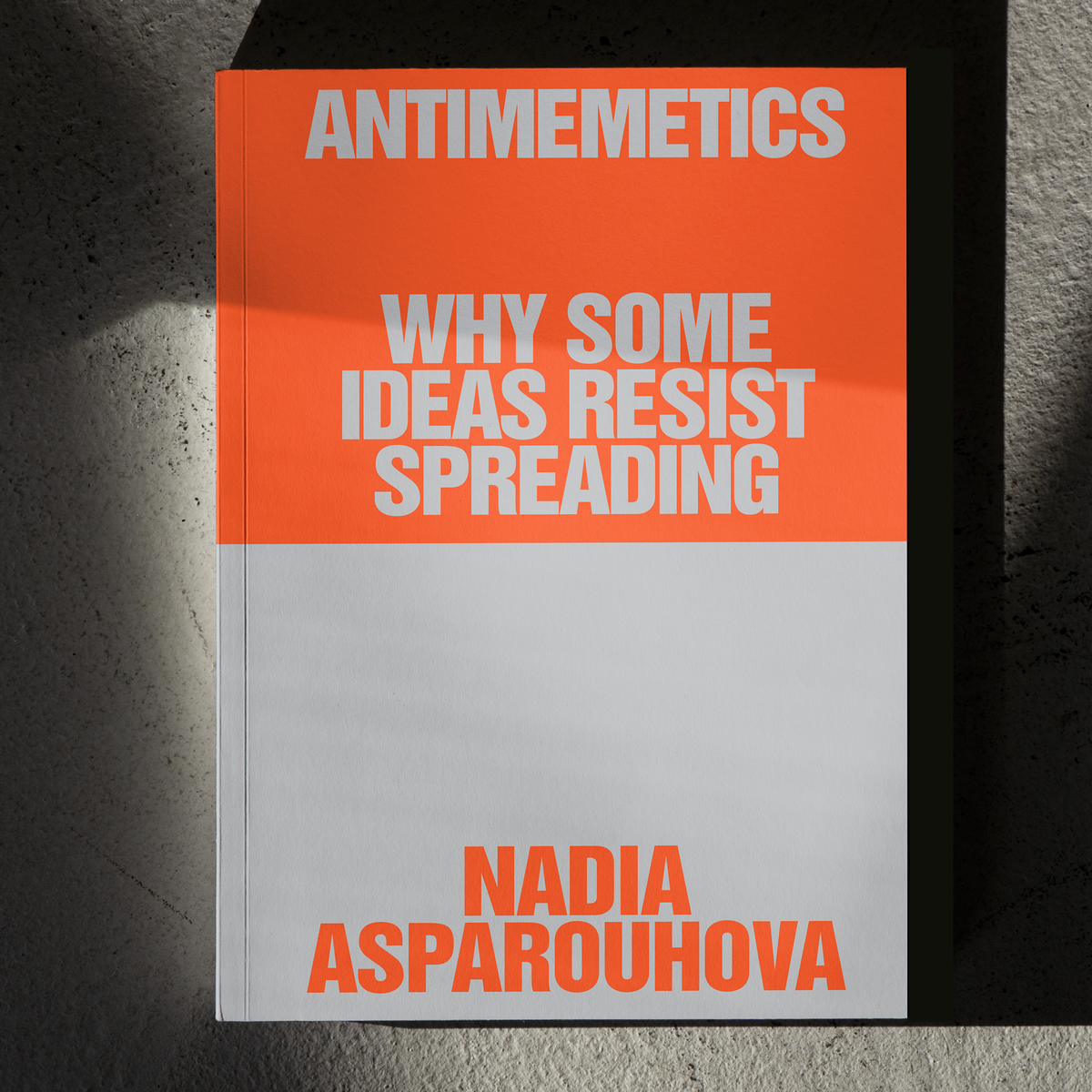Exploring "Antimemetics" with author Nadia Asparouhova
A Q&A with the celebrated writer on ideas that do not wish to be seen

This week social media has been overtaken by AI-generated Studio Ghibli-style images. But the same time this meme was spreading across the internet, what important ideas weren’t spreading and why?
In Nadia Asparouhova’s masterful new book “Antimemetics,” published by the Dark Forest Collective, she explores a previously little-noticed quadrant of our information landscape: antimemes.
Whereas memes are highly transmissible ideas of low consequence, antimemes are difficult to transmit ideas of high consequences. Ideas that are "self-censoring," to quote Nadia's book.
The concept of antimemes was first articulated by the sci-fi writer qntm online in a user forum and later in the book There Is No Antimemetics Division, a 2021 sci-fi book already cemented as a modern classic. Qntm presents the idea not as a theory, but a supernatural creature that a secret intelligence division exists to stop.
Whereas qntm’s book imagines a sci-fi universe where antimemes terrorize us, Asparouhouva applies the lens to the actual world, showing how antimemes are real and can terrorize us, but can also be useful too. As the first nonfiction book exploring the topic, Antimemetics teaches us not just what they are but how to better understand and see them.
Antimemetics is exclusively available on Metalabel, and available in limited edition softcover and digital forms. Collectors also receive an invitation to a roundtable with Nadia and editor Yancey Strickler.
We invited Nadia to tell us more about the project.
METALABEL: What’s an antimeme and why do they matter?
NADIA: Antimemes are self-censoring ideas, meaning that they're hard for us to remember and engage with, despite their importance. Think taboos or cognitive biases, for example.
They're a broad category of ideas that we "don't know we don't know" -- whether that's collectively (like taboos) or individually (like cognitive biases). That doesn't mean they don't have consequences, though, or influence our lives in subtler or unseen ways. So it's important to recognize they exist, and how they shape our behavior.
METALABEL: Why is this idea important to you?
NADIA: Antimemes have always existed, but they've become especially interesting in the last few years with the rise of group chats, newsletters, and other semi-private online spaces. Whereas Web 2.0 was all about going viral, today, many people don't want their ideas to spread too far anymore — and paradoxically, these tend to be the ideas that are most valuable and cherished. Memes definitely explain a lot of our online behavior, but there's a growing parallel, shadow information ecosystem that deserves further examination.
I first came across the term "antimeme" from science fiction author qntm, which he explored in the popular horror sci-fi book, There is No Antimemetics Division. In qntm's universe, antimemes are paranormal creatures who destroy everything they touch, but leave no memory of the experience behind. It's a breathtaking book that got me dreaming about how antimemetics show up in the real world.
METALABEL: Why publish with the Dark Forest Collective?
NADIA: I think books are a reflection of not just their authors, but their editors and publishers. In the best cases, a book is an artifact of an author and editor's unique relationship: the interplay of their thoughts, conversations, and musings to each other. This was certainly the case for Antimemetics. I sat on these ideas for three years before finding an opportunity to publish with the Dark Forest Collective. They're the only group I could think of that would really understand the thesis – or at least what I was gesturing at – and could help it come to life.
